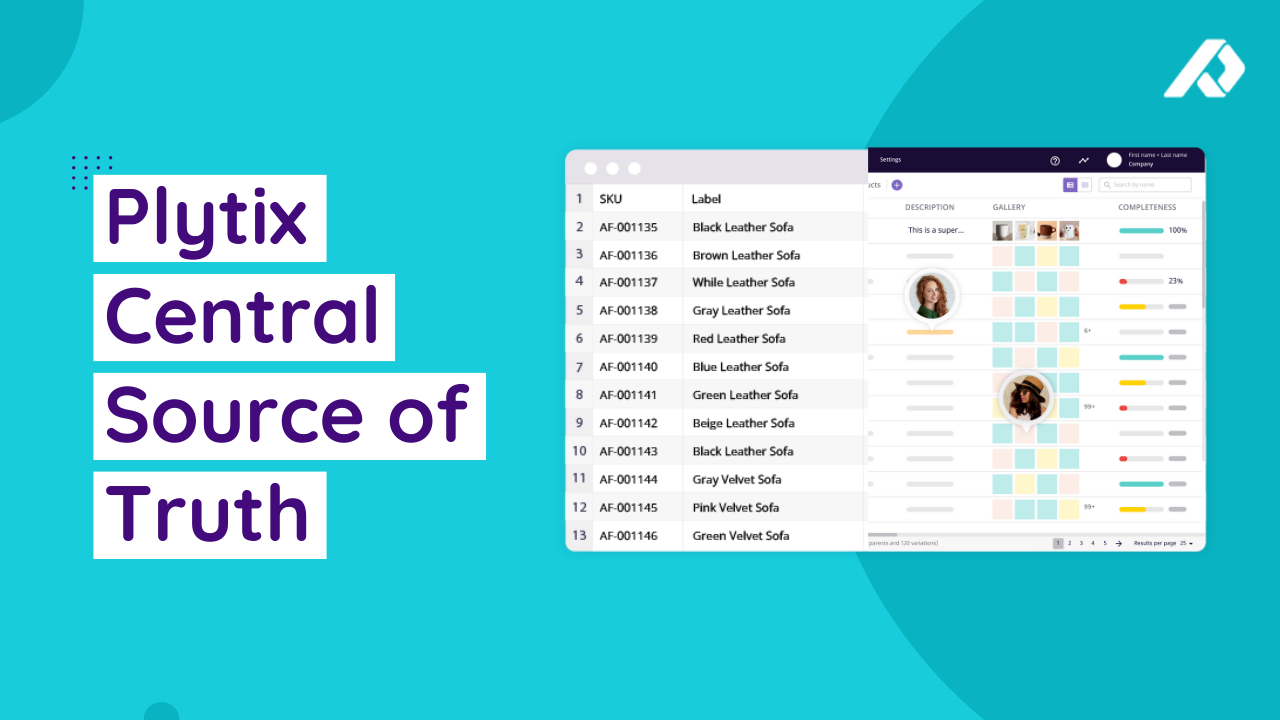Prepare for the Digital Product Passport (DPP) with Plytix
Don’t wait until it’s too late—use Plytix PIM to get your products ready for the DPP.



What is Plytix PIM?
Plytix is an AI-powered Product Information Management software (PIM for short) that helps you store, manage, and optimize your product data. You can easily share data directly from Plytix to your sales channels and stakeholders—formatted just the way they need it
Want to learn more about how PIM works? Discover What is PIM here.
How does Plytix help with the DPP
With Plytix, you can centralize all of your product data, digital assets, and documentation for your DPP.

Optimize your product information to comply with the DPP requirements with Plytix's intuitive, user-friendly interface.

Create an exportable product feed file that matches the DPP template—making it easy to send it wherever you need.

More than 15,000 accounts created so far
Your DPP compliance starts with Plytix
Store all your products for all categories in one place where it's easy for you and your team to manage.

From materials and recycling info, to technical specs and certifications, Plytix keeps it all in one place. When it’s time to create your digital product passports, everything will be right where you need it.

As the DPP requirements evolve, keeping track of what you need can be challenging. Plytix Completeness Attribute identifies any missing details and lets you know when a product has all the key details and is ready to go.


See if Plytix is the right solution for you
There's no such thing as the perfect PIM for all companies. But for every company, there's a perfect PIM.
Let’s find out if we are yours in a short intro call.

Quickly access what you need
Our advanced filtering and centralized data hub make it easy to find the exact product information you need when preparing for the DPP.

Creating your DPP is a team effort
Working on your DPP compliance isn’t a one-person job. With Plytix, everyone on your team can access and update product data in one place.

Stay ahead of the game
The EU’s DPP requirements are still taking shape, but with Plytix, you’ll have the flexibility to adapt and stay prepared as they roll out.
Stronger, Faster, Better

Otter saved 80% of their time previously spent on manual data management

Leigh Country got new products to market 24x faster than before

Allé Designs saw a 45% increase in sales within the first year.


Carefree and painless implementation
Hand over all your spreadsheets, assets, folders, and whatever else you have and we’ll take care of the rest.
We’ll organize, clean up, and set up all of your data in your Plytix account so you can get up and running in no time.
Why companies choose Plytix for the DPP
Fair pricing
Whether your budget is tight or not, you deserve access to great technology. That's why we've created a powerful and affordable solution to help you prepare for the DPP.
Incredible customer care
Our Customer Success team has your back! They'll help you set up your PIM in a way that makes your DPP process easier.
Easy to use
Navigating DPP requirements is tough enough; you don't need to worry about learning how to use a complicated product information system. Unlike most PIMs designed for IT specialists, ours is simple, intuitive, and enjoyable for everyone to use.
All the features you need
From managing digital assets and creating spec sheets to exporting and importing product lists based on your custom filters and performing bulk edits and updates, we've got you covered. And if there's a feature you're missing, don't worry – we're constantly adding new tools to smooth your DPP journey.
Frequently Asked Questions
What is a DPP again?
Alright, let's break this down—a DPP is basically like a digital ID card for your products. It's a central hub of information covering everything from where the materials came from to how to recycle them when you're done.
It's a way for the EU to increase transparency and promote more sustainable practices across a wide range of industries. Although we don't know exactly what it will look like, we can assure you that it won't be a physical "ID card." It will most likely take the form of a QR code, NFC chip, or RFID tag.
Do I really need one of these for my products?
If you're selling products in the EU market, then yes, you'll probably need to provide a DPP for those products. The new rules will apply to all kinds of products (with some exceptions, such as food and feed) on the EU market, regardless of whether they are made inside or outside the EU. This means that producers, resellers, and dealers need to start thinking about this.
The EU has even specified the industries they will prioritize:
- Iron, steel, and aluminum
- Textiles (garments and footwear)
- Furniture (including mattresses)
- tires, detergents, paints, lubricants
- Chemicals, energy-related products (including new measures and revisions of existing ones)
- ICT products and other electronics
So, if you are making or selling any of these products in the EU, you must pay special attention to DPP updates.
How can I prepare?
While the final DPP details are still being decided, the EU has given us a preview of the required information.
So, the best thing you can do is start getting your ducks in a row. Get a PIM system like Plytix to centralize all your product data—descriptions, specs, images, certifications, and more. You can even use Plytix to build templates based on the current guidelines. That way, as they keep refining the rules, you can easily update your templates and stay on top of it.
What should the EU DPP cover?
Based on what’s been shared so far, for a Digital Product Passport to be compliant with the EU’s DPP data requirements, it should include:
- A unique product identifier (UID)
- A global trade identification number as provided for in standard ISO/IEC or equivalent of products or their parts
- Relevant commodity codes (like the TARIC code)
- Compliance documentation, including declaration of conformity, technical documentation, and conformity certificates
- Requirements related to substances of concern
- User manuals, instructions, warnings, or safety information
- Information related to the manufacturer
- Unique operator identifiers other than that of the manufacturer, in particular, responsible for product certification tasks
- information related to the importer
- Relevant information for consumers and end-users on how to install, use, maintain, and repair the product to minimize negative impact and ensure long-term durability.
- Relevant information for treatment facilities on disassembly, recycling, or disposal at end-of-life
- Other relevant information that may influence the way the product is handled by parties other than the manufacturer
Bear in mind all of this could change but, don’t worry, we’ll keep you updated.
When will it come into force?
The ESPR regulation kicked off in 2024, but enforcement will be gradual. By 2030, digital passports will be required for most product categories.
In the meantime, key milestones include:
- 2025: EU releases initial ESPR working plan with timelines
- 2026: DPP will be mandatory for batteries
Stay in the Loop: Keep an eye on our blog—we'll be tracking all the DPP updates, so you don't have to.
Why is the EU even doing this?
The goal is to increase transparency, promote sustainability, and hold businesses accountable for their environmental impact. And hey, as a consumer, I'd sure appreciate knowing more about what I'm buying.
Plus, think about it—if you've got nothing to hide, a little transparency can actually help build trust with your customers. Win-win, if you ask us.
What happens if I don’t comply with it?
The EU is serious about this—they're talking about fines of up to $1,500 per violation. They could even ban you from selling your goods in the EU market altogether. Not exactly a risk worth taking.